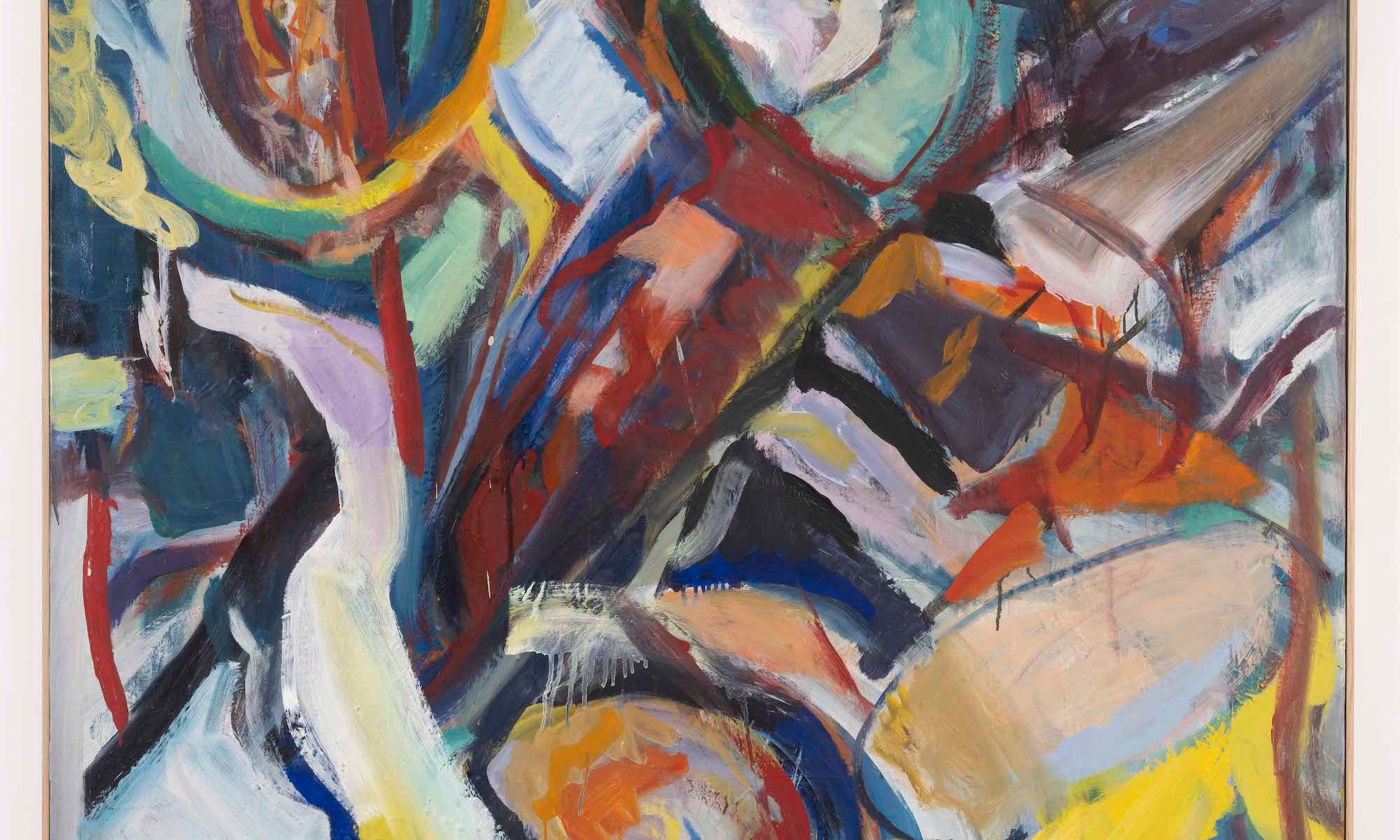Shirley Jaffe, Expression I, 1963 Bertrand Huet / Tutti image. © ADAGP, 2023. Courtesy of Shirley Jaffe Estate and Galerie Nathalie Obadia, Paris / Brussels
A traveling retrospective of Shirley Jaffe paintings has been making the rounds in Europe since last year. The tour for this second-generation Abstract Expressionist began in Paris, Jaffe’s adopted home from 1949 until her death in 2016, at the Centre Pompidou (the largest institutional holder of her work). The show is now on view at the Kunstmuseum Basel and will open at the Musée Matisse de Nice later this year.
The American-born Jaffe has yet to see this kind of institutional spotlight in her home country, though. Now, Galerie Nathalie Obadia is exhibiting two of her 1960s paintings and several works on paper spanning her long career in its stand at Tefaf New York (11-16 May). This homecoming of sorts for the painter, who was raised in Brighton Beach and studied at the Cooper Union, is part of an effort to place more of her works in US museums.
“Since the 2000s, European museums have been interested in her work and today American collectors and museums want to show this singular painter,” says Nathalie Obadia, who has represented Jaffe since 1999. “Our task and our ambition today is to get high-quality paintings into American museums.” Jaffe’s work first entered a public French collection in 1969, and in 1985 the Musée National d’Art Moderne started acquiring her work. She is already represented in American collections such as the Museum of Modern Art and SFMoMA, but European museums have increasingly acquired her work recently (including Kunstmuseum Basel, the National Gallery of Ireland, Musée des Beaux-Arts de Nantes and Musée des Beaux-Arts de Lyon) and Obadia and hopes to extend this momentum across the Atlantic.
Shirley Jaffe, Sans titre, 1965 Bertrand Huet / Tutti image. © ADAGP, 2023. Courtesy of Shirley Jaffe Estate and Galerie Nathalie Obadia, Paris / Brussels
Jaffe’s early paintings in New York and during her first years in Paris were gestural, but in the early 1960s (a period when she went to West Berlin on a grant from the Ford Foundation) she shifted to the biomorphic and geometric forms for which she’s better known. By 1968 she had abandoned gesture completely and instead used flat, muted colours. Her distinctive style came into full force a couple of years later, when she started rendering geometric forms in hard-edged contours.
The two paintings Obadia is exhibiting at Tefaf date to Jaffe’s departure from Berlin and definitive move to Paris. “She chose to remain in Europe and to approach Abstract Expressionism with European influences closer to Kandinsky,” Obadia says. “[Jaffe] made the choice to leave the USA at the end of the 1940s, and the 1950s [were] very much shaped by the choices of art critics Clement Greenberg and Harold Rosenberg, who left little room for American women painters.”
Jaffe occasionally considered moving back to her native New York, but ultimately chose Paris. It wasn’t until she was in her sixties that her work began being exhibited in the US, first with a solo show at New York’s Artists Space in 1989, followed by two solo shows at Holly Solomon Gallery in the early 1990s.
In addition to her showing at Tefaf, Jaffe will be included in next year’s group exhibition at New York University’s Grey Art Gallery, Americans in Paris: Artists Working in Postwar France (1946-1962).

